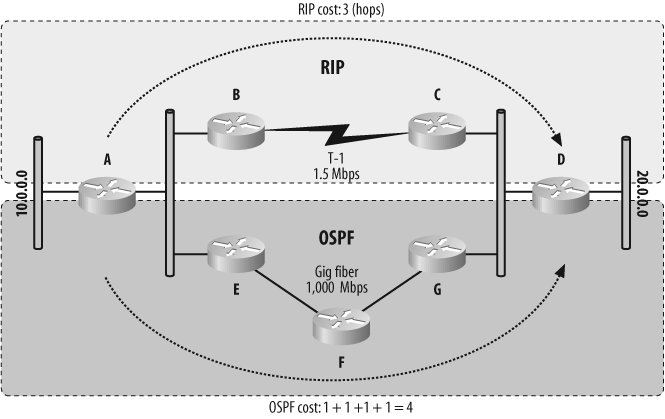Administrative Distance
Networks often have more than one routing protocol active. In such situations, there is a high probability that the same networks will be advertised by multiple routing protocols. Figure 10-7 shows a network in which two routing protocols are running: the top half of the network is running RIP, and the bottom half is running OSPF. Router A will receive routes for the network 20.0.0.0 from RIP and OSPF. RIP's route has a better metric, but as we've seen, OSPF has a better means of determining the proper path. So, how is the best route determined?

Figure 10-7. Competing routing protocols
Routers choose routes based on a predetermined set of rules. One of the factors in deciding which route to place in the routing table is administrative distance (AD). Administrative distance is a value assigned to every routing protocol. In the event of two protocols reporting the same route, the routing protocol with the lowest administrative distance will win.
The administrative distances of the various routing protocols are shown in Table 10-1.
Table 10-1. Administrative distances of routing protocols
|
Route type |
Administrative distance |
|---|---|
|
Connected interface |
0 |
|
Static route |
1 |
|
EIGRP summary route |
5 |
|
External BGP |
20 |
|
Internal EIGRP |
90 |
|
IGRP |
100 |
|
OSPF |
110 |
|
IS-IS |
115 |
|
RIP |
120 |
|
EGP |
140 |
|
ODR |
160 |
|
External EIGRP |
170 |
|
Internal BGP |
200 |
|
Unknown |
255 |
A static route to ...
Get Network Warrior now with the O’Reilly learning platform.
O’Reilly members experience books, live events, courses curated by job role, and more from O’Reilly and nearly 200 top publishers.

